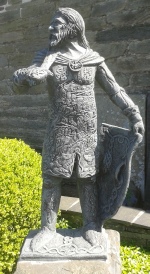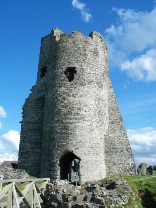Glyndŵ r’s Uprising was made up of a number of campaigns, starting in September 1400 when he led a large force around North-East Wales. Owain’s strategy was to avoid large scale battles and to employ guerrilla attacks and Sieges wherever possible, such as the one led by Rhys and Gwilym ap Tudur in April 1401.
r’s Uprising was made up of a number of campaigns, starting in September 1400 when he led a large force around North-East Wales. Owain’s strategy was to avoid large scale battles and to employ guerrilla attacks and Sieges wherever possible, such as the one led by Rhys and Gwilym ap Tudur in April 1401.
Glyndŵr led a large-scale campaign down the Tywi Valley in July 1403 where a number of English-held towns were taken and their castles either taken or put under siege. This continued into throughout 1403 and into 1404, when a number of notable sieges took place at castles around Wales, including Caernarfon, Beaumaris and Coity. In early 1404, Glyndŵr also took Aberystwyth and Harlech castles - making the latter his family home.
Owain’s men attacked into Monmouthshire in 1404 and 1405 but, despite a victory at Craig y dorth, they suffered heavy defeats in battles at Campstone Hill, Grosmont and Pwll Melyn. In early August 1405, a French force landed at Milford in West Wales and was quickly joined by a large number of Glyndŵr’s men. This Franco-Welsh army then travelled through South Wales to confront Henry IV near Worcester.

There was very little military activity in Wales during 1406 - a possible reason for this was that Glyndŵr and Henry IV had agreed a truce in the previous summer. In 1407, Prince Henry - the future Henry V - put Aberystwyth under siege, however, and both Aberystwyth and Harlech had fallen to the English by early 1409.
The ‘Last Great Raids’ of Glyndŵr took place in the summer of 1409, when he led a large group of his remaining supporters into Shropshire. Although the Uprising continued for a number of years under the leadership of his son, Maredudd, little is known about Owain’s activities after 1412.
There are many maps in the 'Campaigns' section specially linked to the relevant 'Campaign' page. If you require to print any of these maps, it is recommended that you go to the 'Maps' page and select the maps you wish to print
Campaigns Summary

